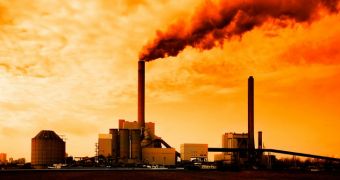In a recent paper in the Journal of Geophysical Research-Atmospheres, a team of researchers warn that, as climate change and global warming progress, odds are that ozone pollution in the United States will take a turn for the worse.
In said paper, the scientists who took part in this research project explain that, unlike other air pollutants, ozone does not end up floating over certain regions as a direct consequence of one industrial activity or another.
On the contrary, ozone pollution is the result of sunlight-enabled interactions between nitrogen oxides and volatile organic compounds originating either from plants or from fuels like coal and oil.
Whereas the ozone present in our planet's atmosphere is quite beneficial to life on Earth, seeing how it keeps the planet safe from dangerous ultraviolet radiation, the ozone hovering fairly close to the ground is not exactly humanity's best friends.
Thus, studies have shown that, when exposed to ground-level ozone for considerable periods of time, folks can develop serious medical conditions such as bronchitis or emphysema. This compound has also been shown to aggravate asthma and cause throat irritation.
As detailed on the official website for NCAR/UCAR (the National Center for Atmospheric Research / University Corporation for Atmospheric Research) plants and ground-level ozone do not get along all that well either. Specifically, this compound has been shown to affect crop yields.
In the paper in the Journal of Geophysical Research-Atmospheres, specialists say that climate change and global warming, together with air pollution-related changes in the makeup of the planet's atmosphere, might push ground-level ozone concentrations in the United States through the roof.
More precisely, it is argued that, under a business-as-usual scenario, unhealthy summertime ozone levels could up by as much as 70% by the year 2050. It is said that, should this come to happen, both public health and natural ecosystems in this part of the world will be greatly affected.
In case anyone was wondering, climate change has high chances to go hand in hand with an increase in ground-level ozone concentrations due to a series of factors. Thus, studies have shown that the chemical reactions that lead to the formation of this compound occur faster at higher temperatures.
Besides, there is evidence that, when exposed to a warmer weather, plants end up coughing out more volatile organic compounds than they normally would. Add to this an increase in air concentrations of pollutants for which humans are to blame, and the result is what some might like to call the perfect ozone-creating storm.
“It doesn’t matter where you are in the United States – climate change has the potential to make your air worse. A warming planet doesn’t just mean rising temperatures, it also means risking more summertime pollution and the health impacts that come with it,” says study leader Gabriele Pfister.
In light of these findings, specialists recommend that measures are taken to reduce air concentrations of chemical compounds that can interact with one another and form ozone. “Our work confirms that reducing emissions of ozone precursors would have an enormous effect on the air we all breathe,” specialist Gabriele Pfister stresses.

 14 DAY TRIAL //
14 DAY TRIAL //